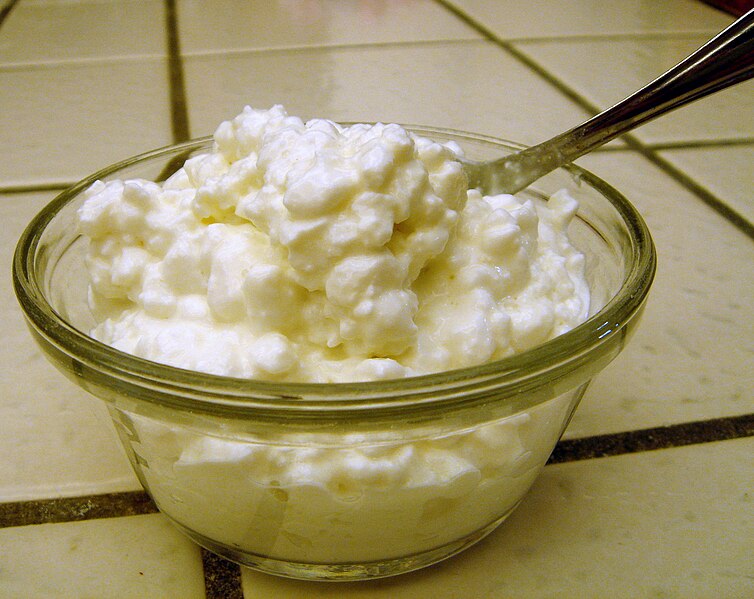2 gallons fresh milk (preferably raw)
1 cup cold water
3/4 Hansen's cheese rennet tablet, or 8 junket rennet
tablets
2 tablespoons sea salt
Allow 1 gallon of the milk to ripen overnight in a cool
place (50 to 60F). The next morning, add the other gallon. In a big, enamel or
stainless-steel pot, warm the milk to 86F. Add tablet to the cold water, and
stir until dissolved. Set the pot in a bigger vessel of warm water (88 to 90F),
away from drafts. Add rennet solution, and stir well. Let stand undisturbed
until a firm curd forms—about 30 to 45 minutes. Test the firmness by delicately
putting a finger into the curd at an angle and lifting it. If curd breaks
neatly over your finger, it is ready to cut. If not, let it set 15 to 20
minutes longer.
Take out pot from larger vessel, and cut curd into 3/8-inch
cubes. Use a knife with a blade long enough to cut through to the bottom of pot
without the handle's touching the curd. Stir curd cubes carefully but
thoroughly using a wooden spoon for about 15 minutes; use long, slow movements
so curds are not crushed. Put the pot in a larger pot with water (forging a
double-boiler effect), and heat gradually, raising curds' temperature about 1
1/2 degrees every 5 minutes until it reaches 102F. Stir with a wooden spoon to
hold on the curds from sticking together. Remove from heat when curds start to
hold their shape and easily fall apart when held, but not squeezed, together.
Stir every 5 minutes for about 1 hour (you read that right!)
to keep curds from sticking. Leave them in the whey till the mass becomes so
firm that a handful of pieces, when pressed together, will shake apart easily.
Place the curds on a double layer of 3-foot-square cheesecloth, and pull
corners of cloth together. Swing gently, allowing curds roll back and forth so
whey drains without squeezing. Sprinkle curds with half of sea salt, and mix
thoroughly with wooden spoon. Sprinkle on remaining sea salt, and mix in by
hand.
Tie the cheesecloth so curds form a ball; hang up, and allow
the whey to drip for 45 minutes. Remove cheesecloth; fold it into a rectangular
bandage, 3 inches by 3 feet, and wrap tightly around the ball. Using your
hands, press down on ball until top and bottom are flat. Put three or four
layers of cheesecloth under and over the cheese. Place in press; adjust pieces
of wood; put a heavy object on the press; let it sit overnight. Turn, then
press overnight once more.
Take out the cheese from the press, and remove cheesecloth
wrapping. Allow to stand in a warm room (70 to 75F) for 6 hours while rind
forms and dries out. Then coat using hot, melted paraffin. Holding the cheese
with tongs, dip one half and then the other half. Or paint on paraffin with a
basting brush. An alternate to paraffin coating is rubbing vegetable oil into
the cheese. Ripen in a cool place (50 to 65F) 3 to 4 weeks; turn two or three
times each week.
Makes about one pound of cheese
© Athena Goodlight









